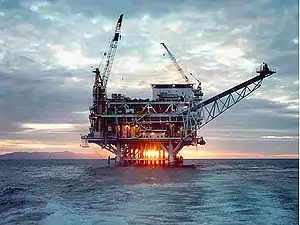Chemical process modeling
Chemical process modeling is a computer modeling technique used in chemical engineering process design. It typically involves using purpose-built software to define a system of interconnected components,[1] which are then solved so that the steady-state or dynamic behavior of the system can be predicted. The system components and connections are represented as a process flow diagram.[1] Simulations can be as simple as the mixing of two substances in a tank, or as complex as an entire alumina refinery.[2]
| Part of a series on |
| Chemical engineering |
|---|
| Fundamentals |
| Unit processes |
| Aspects |
| Glossaries |
|
|
|
Chemical process modeling requires a knowledge of the properties of the chemicals involved in the simulation,[1] as well as the physical properties and characteristics of the components of the system, such as tanks, pumps, pipes, pressure vessels, and so on.
See also
External links
- Real world examples--> Brought to you by PEA.
- Comprehensive directory of topics in plant simulation, process modeling and chemical engineering. --> by Kimmo Klemola, Dr. Tech. (Chem. Eng.), Lappeenranta, Finland. Includes links to other directories.
- PottersWheel --> Parameter calibration in chemical reaction network models
References
- "Chemical process simulation : Processium, process simulation (chemical process simulation and conception)". Processium. Archived from the original on 2015-07-10. Retrieved 2017-06-24.
- Franco, Thiago; Seno Jr., Roberto; Moreno, Rodrigo; van Deursen, Caio; Freitas, Alexandre. "Process simulation in VM-CBA alumina refinery" (PDF). The International Committee for Study of Bauxite, Alumina & Aluminium. Archived from the original (PDF) on 2016-08-29. Retrieved 2017-06-24.
